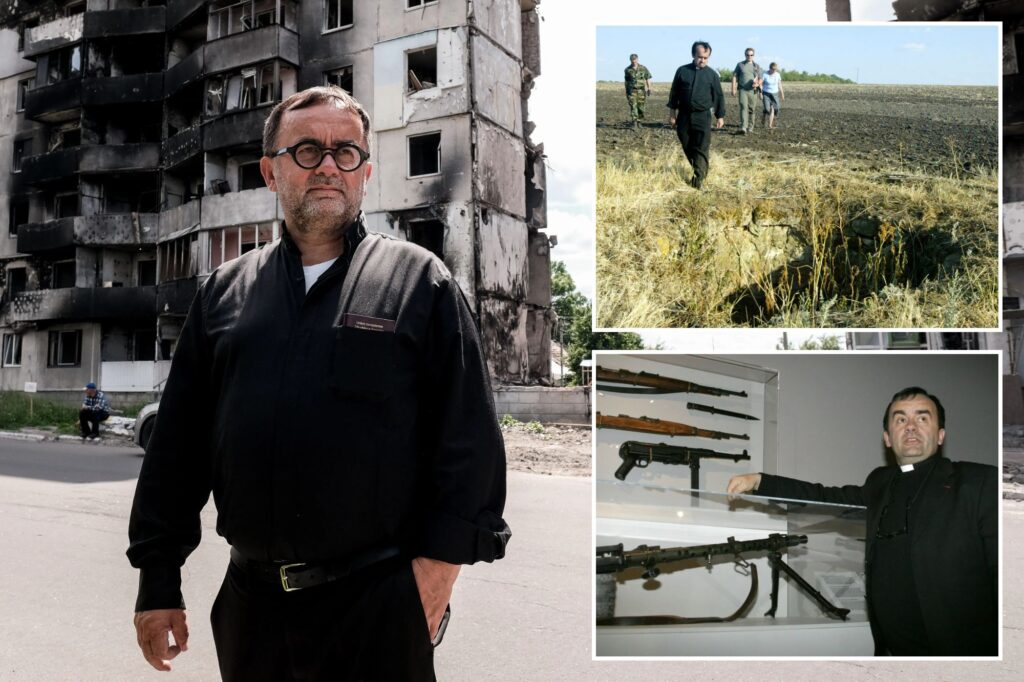🔴 Website 👉 https://u-s-news.com/
Telegram 👉 https://t.me/usnewscom_channel
On a research trip to investigate Holocaust killing sites in Ukraine, I met an elderly couple in a village who lived there when its Jews were exterminated.
They were shaking so much I thought they had Parkinson’s — but it was memory, not illness, causing the tremors.
The husband began to cry and told me a story he had kept secret for 80 years.
As a child, he was best friends with a Jewish boy, Izrik, who lived nearby. Although many of the village’s Jews had already been shot, Izrik and his mother, Hannah, had been allowed to stay because they were working for a non-Jewish family.
One day, a Volksdeutsch (ethnic German) came to their home. In a sunny field, he shot Hannah in the head, then mowed down Izrik as he tried to run, still screaming for his mother.
The German stole their belongings and burned their bodies while my interlocutor watched from his hiding place amid the wildflowers.
He told me all this in the field where it happened.
I’ve heard the Holocaust characterized as many things: tragedy, atrocity, catastrophe, genocide and Shoah. Lost in those grand terms, however, is the fact the Holocaust was not just a crime against “humanity” writ large.
The Holocaust’s impact may be felt collectively, but it was experienced personally by every Jewish victim. Each Jewish person was not killed by “the Nazis” — they were killed by individual Nazis.
As we observe on Thursday Yom HaShoah, Holocaust Remembrance Day for Israel and the world’s Jews, it’s important to recognize every murdered Jew was the victim of a crime.
Every perpetrator, victim and witness has a name, a face, a family and a story.
But as the number of living survivors and witnesses dwindles — 70% of Jewish Holocaust survivors will die in the next decade and 90% in 15 years, a study just found — so does our capacity to investigate those crimes.
Applying a criminal-forensic lens to Nazi atrocities is difficult.
Archival research is an important first step, but it must be paired with in-person visits to crime scenes. Only there can we collect physical evidence and testimony from living witnesses to the Holocaust, many of whom spend their entire lives in the same small village.
Europe’s Jews were not murdered in secret. They were killed in broad daylight while their neighbors watched, whether with glee or horror.
I have heard thousands of stories about cases like Hannah and Izrik’s, testimony that allows us to put names and faces to the dead, testimony that can only be gathered in person.
My organization, Yahad-In Unum, receives hundreds of requests every year from families trying to find out where and how their relatives were killed.
However difficult the truth is, it gives some measure of catharsis, allowing the family to say kaddish (the Jewish memorial prayer for the dead) at their relative’s last resting place — even if it is a mass grave.
The investigative process can also have a transformative effect on the investigators themselves.
A student of mine at Georgetown University came on a research trip to Poland, where we interviewed several witnesses and visited Auschwitz.
He wasn’t very motivated at the beginning of the trip, but I noticed his change as he encountered the Holocaust’s legacy firsthand.
A little while after our return, his family told me he had asked to have a Bar Mitzvah, the Jewish coming-of-age ceremony that males usually undergo at age 13.
He had previously distanced himself from his Jewish identity, but being forced to confront genocidal antisemitism changed his perspective like no classroom lesson could’ve.
Unfortunately, we are running out of time to conduct these investigations. Every day, fewer survivors and witnesses remain, physical evidence is degrading, and these “cold cases” get harder to solve.
Witness testimony is unique. Once witnesses die, their stories are lost forever.
I once interviewed a man for three hours in a village near the Sobibor extermination camp. The Nazis had forced him to transport sick Jews to the gas chambers in his wagon, something he hadn’t spoken of since the war.
He died three weeks later.
The coming years are our last chance to gather as much evidence as we can.
And amid historically high levels of antisemitism and Holocaust denial — which rose sharply following Oct. 7, 2023, the largest massacre of Jews since the Holocaust — our mission has become more important than ever.
I can’t tell you how often I’ve asked, “Why haven’t you told anyone what happened?” and heard the most dispiriting reply: “No one asked — and who would care?”
This Yom HaShoah, I ask you to care.
Yes, about “the 6 million” but also about the identities of each person in the 6 million — and of each of their murderers.
Without seeing the victims as individuals and investigating their deaths, we cannot give them and their families the dignity and justice they deserve.
Father Patrick Desbois is the founder and president of Yahad-In Unum and Professor of the Practice of the Forensic Study of the Holocaust at Georgetown University.
